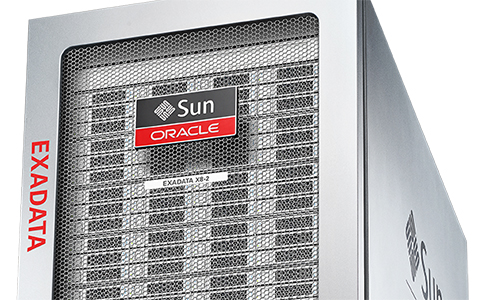Big IT Operations Aren’t Just Moving To The Cloud. They’re Joining Forces With It.
Blog: Oracle BPM
If you follow tech trends, you know that companies these days are often skipping the cost and hassle of operating data centers and instead using readily available cloud services. For many big companies, though, it’s a matter of using both models: finding ever-more ways to take advantages of cloud computing services while still keeping the best of their data centers.
That’s the fuel behind Oracle’s Exadata Database Machine, which celebrates its 10th year in production, and the launch of its most advanced machine to date, Oracle Exadata Database Machine X8.
In addition to improvements in its performance and capacity, Exadata X8 taps machine learning and artificial intelligence in new ways that boost a team’s productivity. The machine-learning capabilities include automatic indexing, which continuously learns and tunes the database as usage patterns change, without manual tuning. Its new automated performance monitoring combines AI with Oracle’s years of real-world performance analysis to spot performance issues without human intervention.
For a growing list of companies, Exadata offers a step to the cloud, while also solving a multitude of on-premises problems today. Exadata is an engineered system of software and hardware designed to do one thing extremely well: run Oracle Database for the most demanding workloads. It brings together the software, compute, networking, and storage into one system that’s preconfigured, tested and optimized for all database workloads. It delivers high performance and reliability to operations such as OLTP, analytics, in-memory computation, data warehousing, machine learning, and Internet of Things. That performance is especially valuable for organizations that handle data at massive scale, like those in finance, retail, manufacturing, and telecommunications. In fact, 77% of the Fortune Global 100 run Exadata, as do four out of five of the biggest banks, telecoms, and retailers.
Oracle Exadata is unique because Oracle owns the hardware and the software and its engineering teams work together to optimize database performance at every level. “We have done deep engineering inside the database, the Exadata System Software, along with all the hardware components, and the network protocols. This results in amazing efficiencies, and the whole is significantly greater than the sum of the parts,” says Ashish Ray, vice president of database product management at Oracle.
One common use case: you run a major data management operation that has sprawled out over time, so you bring in a small number of powerful Exadata machines to replace a huge swath of commodity x86 boxes. One large financial services company went from 6,000 x86 servers to 100 Exadata machines, and in the process reduced its ongoing software updates by 99%, says Steve Zivanic, vice president of converged infrastructure marketing at Oracle. “That’s material savings in management and operational costs, as well as power, space, cooling, conduit, and floor space,” Zivanic says.
The ability to consolidate while improving performance and reliability becomes important as companies consider a move to cloud, especially since Oracle Exadata Database Machine is more than a piece of hardware for the data center. It’s also the database foundation of a multitude of cloud services from Oracle. These include Oracle’s SaaS apps, Exadata Cloud Service, and Oracle’s Autonomous Database, which depends on machine learning in Exadata to deliver some of its self-driving database capabilities. And Exadata is also offered as a Cloud at Customer option, which delivers the benefits of a public cloud but sits behind a customer’s own firewall.
When large organizations set a mandate to move to the cloud, “they have to first get control of their on-premises architecture,” Zivanic says. “They don’t want to recreate the same mess in the cloud that they had before.” Consolidating database workloads onto a few Exadata machines also likely lowers costs, raises security, and increases performance. Then, they look at moving to the cloud as a stepped process. “What we have noticed with Exadata is that customers clearly see a coexistence model with their private cloud—with Exadata Cloud at Customer, with Exadata Cloud Service, and also now with Oracle Autonomous Database—essentially the same Oracle Database and the same underlying Exadata platform,” he says.
For example, an $80 billion healthcare industry company achieved a 10X performance increase over its existing servers, and ended up replacing more than 600 systems with 50 Exadatas. “The company’s board of directors mandated that they could only evaluate cloud options, and Exadata is now viewed as the company’s first step into the cloud,” Zivanic says.
Leave a Comment
You must be logged in to post a comment.








